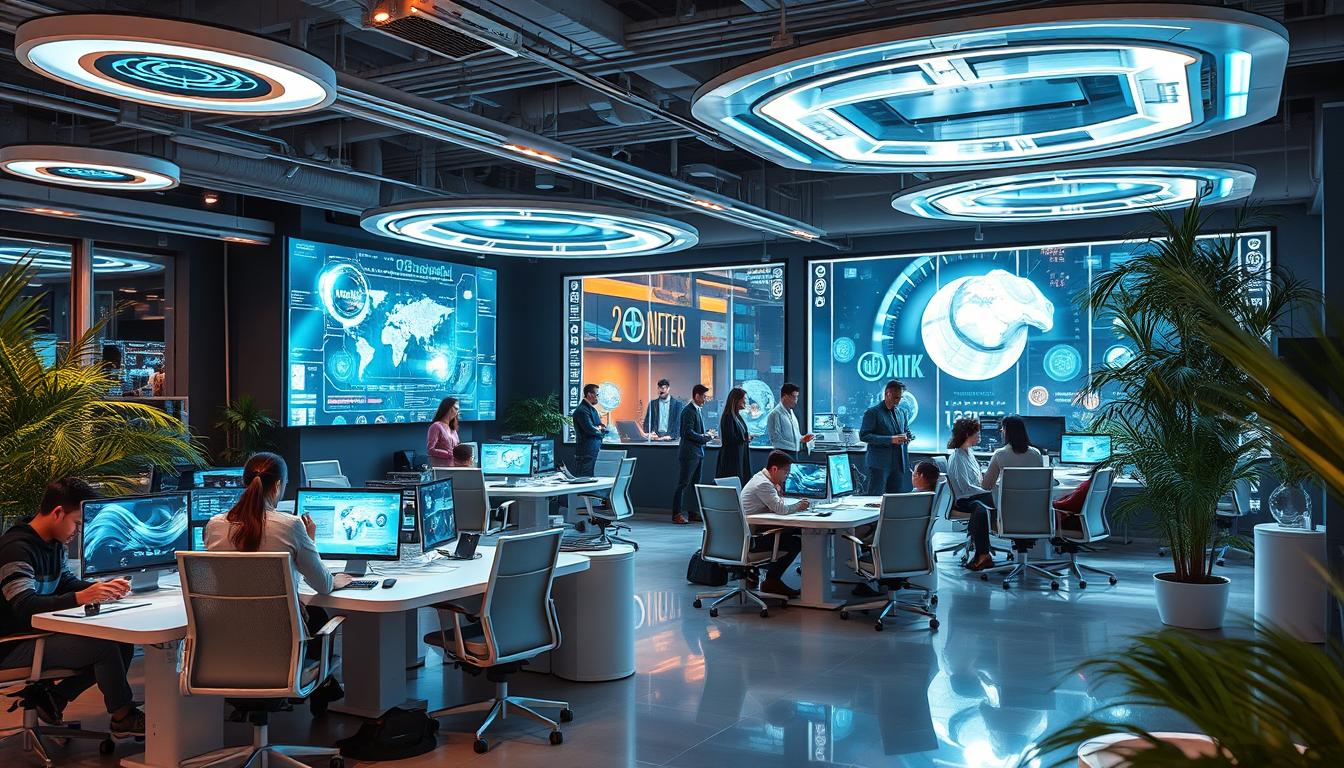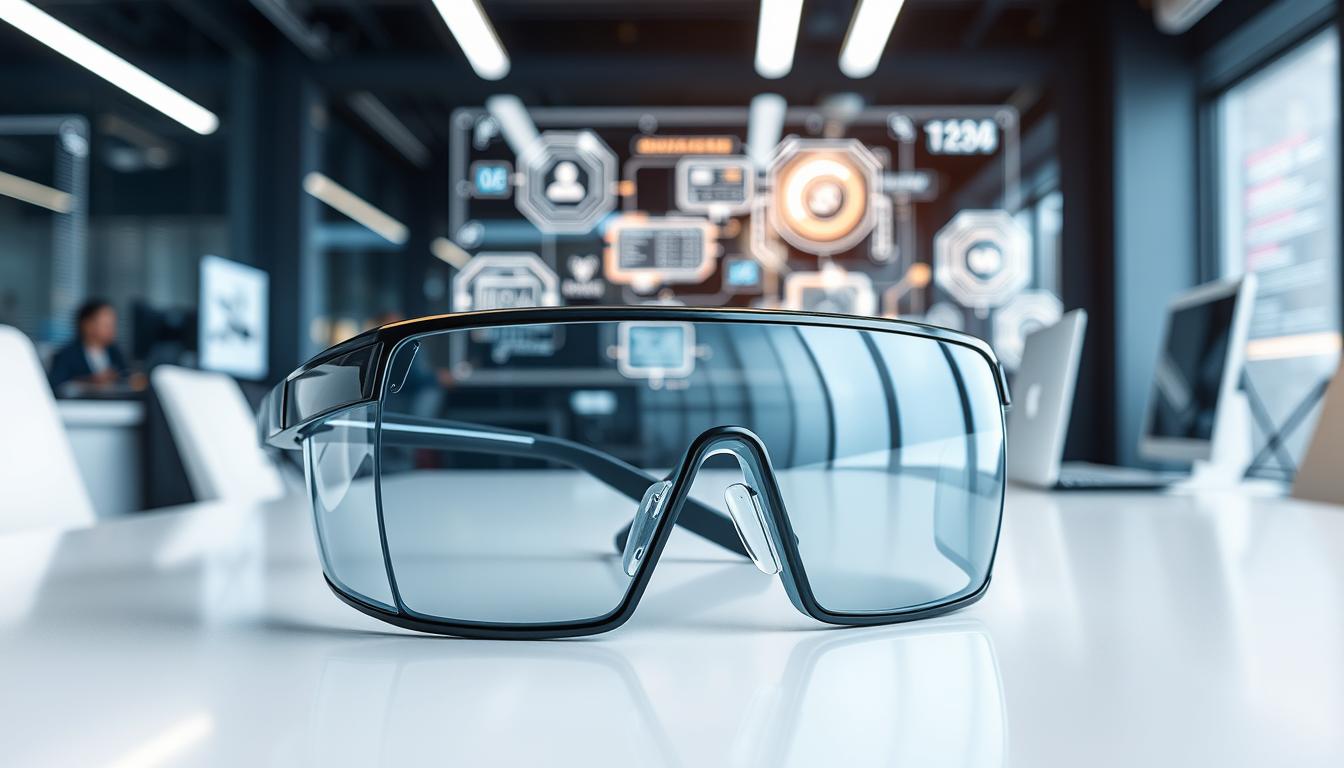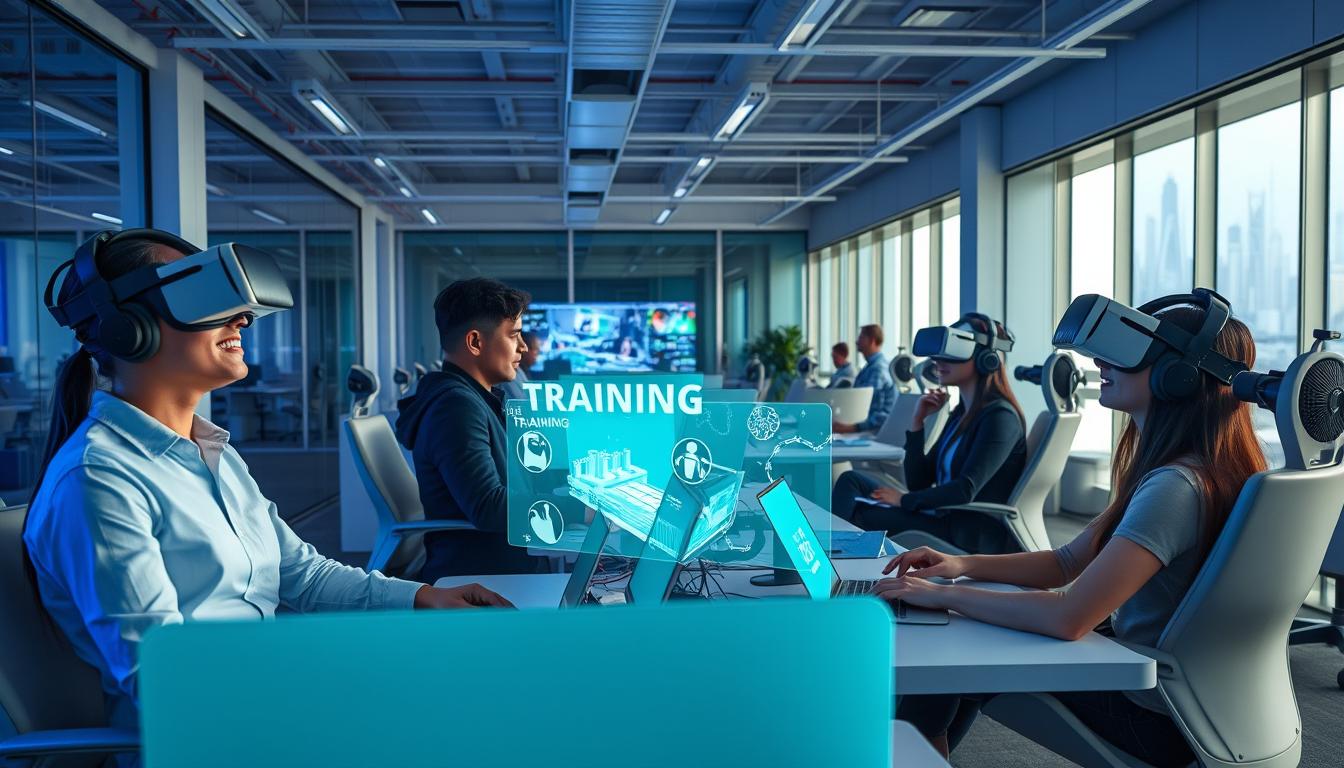Last Updated on December 9, 2025
The advent of augmented reality (AR) and virtual reality (VR) is set to revolutionize the workplace across various sectors. These immersive technologies promise to boost employee collaboration, enhance productivity, and transform training methods. As AR VR Workspaces start to take shape, you can look forward to groundbreaking experiences that blend these innovations into your everyday tasks. Companies that embrace these advancements early will likely enjoy substantial gains in efficiency and engagement, setting the stage for the workspaces of the future.
Key Takeaways
- 50% of businesses not currently using AR/VR plan to adopt it within the next three years.
- 38% anticipate that immersive technologies will become mainstream in three to five years.
- 82% of companies implementing AR/VR report benefits that meet or exceed expectations.
- Industries like healthcare, logistics, and training are integrating VR/AR technologies effectively.
- Virtual environments will enhance existing physical workspaces rather than replace them entirely.
Introduction to AR and VR in the Workplace
Augmented reality and virtual reality are revolutionizing the workplace experience. These technologies offer immersive experiences that redefine business operations. In an augmented reality workplace, digital overlays enrich the physical space with interactive tools, boosting productivity. Virtual reality, meanwhile, creates a fully simulated environment for diverse applications.
Adopting this digital innovation enhances business collaboration across teams, regardless of their physical location. Companies that embrace AR and VR witness a notable leap in efficiency and task completion times. They see a 32% productivity increase and a 46% reduction in task completion time, highlighting the technology’s benefits.
Companies at the forefront are integrating these tools, ushering in a new work era. With 82% of business leaders planning to allow remote work post-pandemic, the trend is clear. Studies show remote workers are 22% happier than their office-based counterparts, making AR and VR solutions even more attractive.
Understanding AR VR Workspaces
In today’s fast-evolving digital landscape, grasping AR VR definitions is crucial. Augmented Reality (AR) overlays digital information onto the real world. This allows you to see practical applications on physical objects. Virtual Reality (VR), on the other hand, immerses you in a digital environment. Here, you can interact with elements as if they were real. This blend of technologies forms the basis of AR VR Workspaces, revolutionizing modern collaborative workspaces.
Defining Augmented Reality and Virtual Reality
AR and VR go beyond simple definitions; they represent vast potential. For example, Walmart uses VR to train employees in high-pressure scenarios safely. This showcases the profound impact of emerging technologies on workspaces. Such training equips employees with practical skills, reducing risks in real-life situations.
Impact of Emerging Technologies on Workspaces
The integration of AR and VR is transforming the workplace, boosting efficiency. Companies like Ford apply VR for product design and prototyping, saving time and costs. These examples highlight how AR VR Workspaces promote collaboration, allowing teams to work together from different locations. This boosts productivity. AR also enables engineers to understand complex diagrams better, streamlining operations.
Enhanced Collaboration Through AR and VR
Remote work is becoming more prevalent, making collaboration crucial. Augmented Reality (AR) and Virtual Reality (VR) are revolutionizing teamwork. They provide innovative ways to communicate and interact, creating immersive environments. This allows team members to connect seamlessly, no matter where they are.
Virtual Meeting Rooms for Global Teams
Virtual meeting rooms offer a sense of presence similar to in-person meetings. This leads to deeper connections among colleagues, something emails and chats often can’t replicate. In these virtual spaces, collaboration is enhanced, free from the constraints of distance. This approach makes brainstorming, project reviews, and training more productive and engaging.
AR-Assisted Communication Tools
AR communication tools bring significant benefits to remote workers. They enable real-time interaction with shared digital content, boosting collaboration. For example, healthcare and engineering benefit from AR that overlays critical information on tasks. This streamlines workflows and enhances decision-making. By leveraging these tools, you can overcome traditional communication hurdles and build more efficient teams.
Immersive Training and Skill Development
Augmented and virtual reality are revolutionizing skill development across industries. VR training programs allow employees to hone their skills in a safe, controlled environment. This method boosts engagement and retention of critical knowledge and skills.
Benefits of VR-Based Training Programs
VR-based training significantly enhances retention rates. Traditional methods often retain 10-20% of information, whereas immersive learning can retain up to 75%. The benefits are numerous:
- Accelerated trainee proficiency: Employees quickly acquire essential skills.
- Reduced training costs: Less need for in-person instructors and physical resources.
- Improved operational efficiency: Streamlined processes lead to better performance outcomes.
Safe Learning Environments for High-Risk Industries
In high-risk industries, immersive training is crucial. Fields like healthcare and aviation need safe spaces to practice without risk. AR and VR enable realistic simulations, mirroring real-world conditions. For example:
- Surgeons use AR to overlay crucial data during procedures, enhancing precision.
- Medical trainees practice procedures safely in VR simulations.
- The U.S. Air Force uses AR and VR for effective pilot and crew training, cutting curriculum time.
Increasing Productivity with AR and VR
AR and VR technologies significantly enhance productivity across diverse industries. These advancements allow companies to improve efficiency and streamline operations effectively. Your team can leverage these tools to access real-time data, enabling swift and informed decision-making.
Real-Time Data Access for Employees
Providing employees with real-time data access transforms their ability to respond to challenges. This immediate availability of information leads to enhanced productivity enhancement by minimizing the time spent searching for resources. For instance, businesses utilizing AR have reported an impressive average productivity improvement of 32%, demonstrating just how powerful this immediate access can be.
Streamlining Work Processes and Efficiency
AR and VR technologies serve as essential tools for streamlining work processes by automating routine tasks and facilitating more structured environments. Such enhancements create remarkable improvements in workflow, with companies experiencing a 46% reduction in task completion times. Organizations like Boeing have successfully utilized AR guidelines, reducing wiring production time by 25% while boosting overall productivity by 40%.
Current Applications of AR and VR in Workplaces
Organizations are now using AR and VR to improve their operations. These technologies are great for creating immersive training simulations. They give employees a unique way to learn new skills.
By practicing complex tasks in a safe space, learning outcomes improve greatly. This is a key benefit of using AR and VR in training.
Training Scenarios and Simulations
VR has changed how employees learn skills in many industries. For example, healthcare uses VR to simulate surgeries. This gives doctors a chance to practice in a realistic setting.
The construction industry also uses VR for safety training. These simulations not only save money but also boost employee retention. Retention rates can increase by 30% to 50%.
Employees trained with VR show more confidence and better task execution. This can greatly benefit organizations.
Remote Assistance and Troubleshooting
AR technologies enable on-site technicians to get real-time guidance from experts. This reduces downtime and boosts efficiency in troubleshooting. As more companies adopt AR, collaboration across locations becomes seamless.
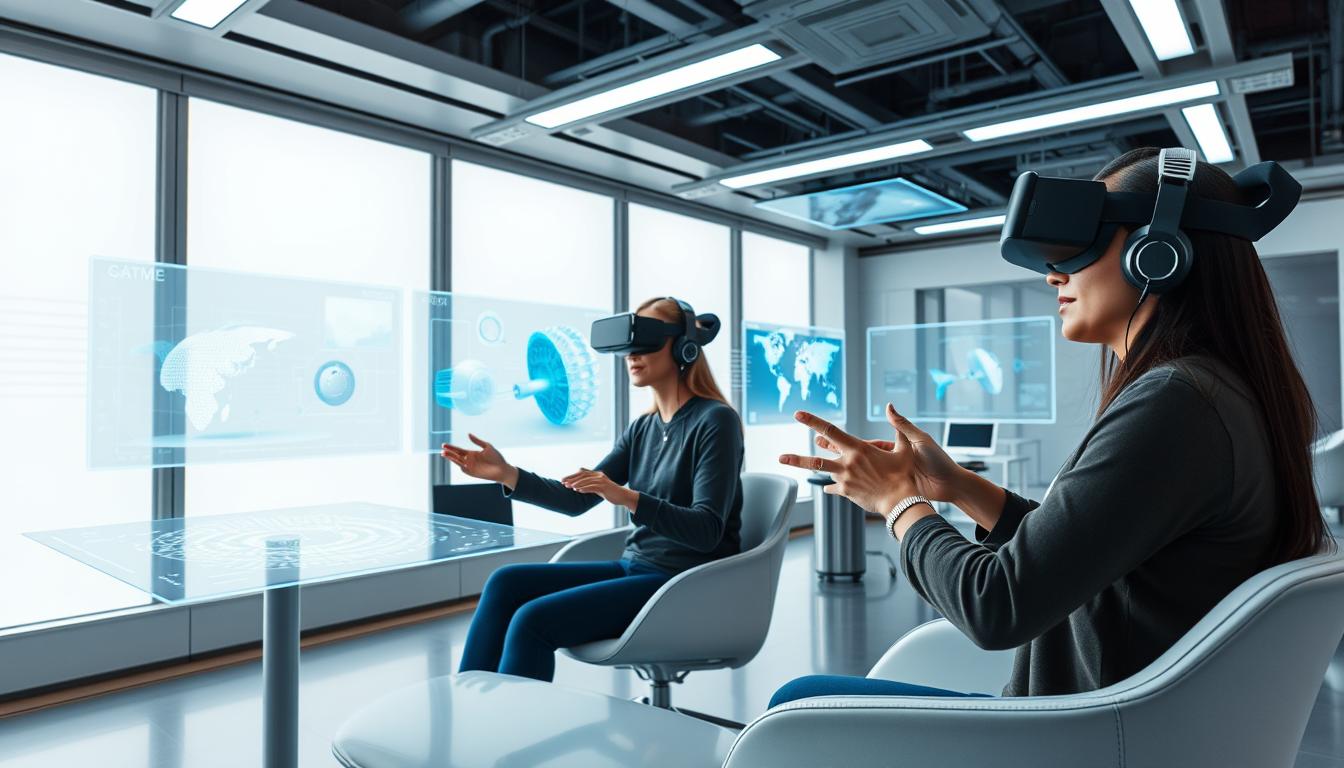
Transforming Product Design and Prototyping
Augmented Reality (AR) and Virtual Reality (VR) are revolutionizing product design innovation. They enable teams to visualize concepts in immersive 3D, surpassing traditional methods. This allows for a more interactive examination of designs.
Using AR for 3D Visualization
AR blends digital models with the physical world, offering a fresh perspective on designs. Designers can overlay virtual elements on real objects. This helps evaluate how a product will function and appeal before physical creation.
This method significantly accelerates the design process. It allows for instant feedback and modifications, enhancing efficiency.
Accelerating the Prototyping Process
AR prototyping shifts focus from physical to virtual mock-ups. Teams can review designs and test functionalities in real-time. This reduces timelines from weeks to days.
This advancement not only speeds up iterations but also cuts costs. Traditional prototyping methods are often expensive and time-consuming.
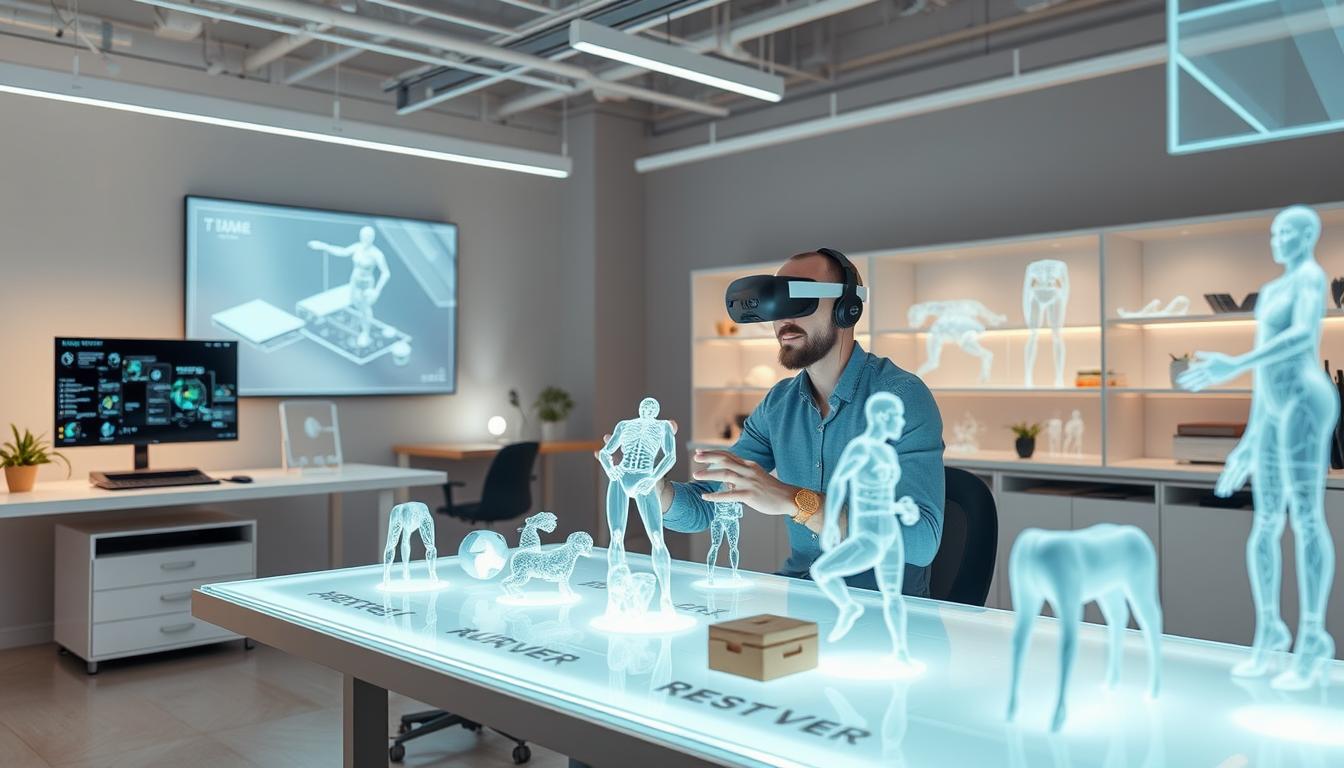
Integrating AR and VR into design workflows boosts accuracy and confidence. It minimizes errors before physical models are created. Exploring these technologies can reshape your product design approach through improved visualization and efficiency.
AR VR Workspaces: Revolutionizing Remote Work
The shift to remote work is in full swing, with AR and VR leading the charge. These technologies enable teams to collaborate in immersive virtual spaces, mimicking the experience of being together in person. This innovation is reshaping teamwork, making it more flexible and effective across distances.
Creating Engaging Virtual Environments
AR and VR allow teams to meet in virtual rooms, where everyone appears as an avatar. This enhances communication and idea exchange, overcoming physical barriers. It also streamlines project management by providing real-time access to shared 3D models, enabling instant collaboration.
Facilitating Access to Shared Resources
Access to shared resources is crucial for effective AR VR teamwork. AR offers real-time guidance, eliminating the need for on-site experts. VR presentations boost engagement, ensuring your message is clear. Embracing these technologies can significantly improve productivity and team cohesion, creating a more connected work environment. For more insights on remote work trends, explore these trends that highlight the evolving landscape.


